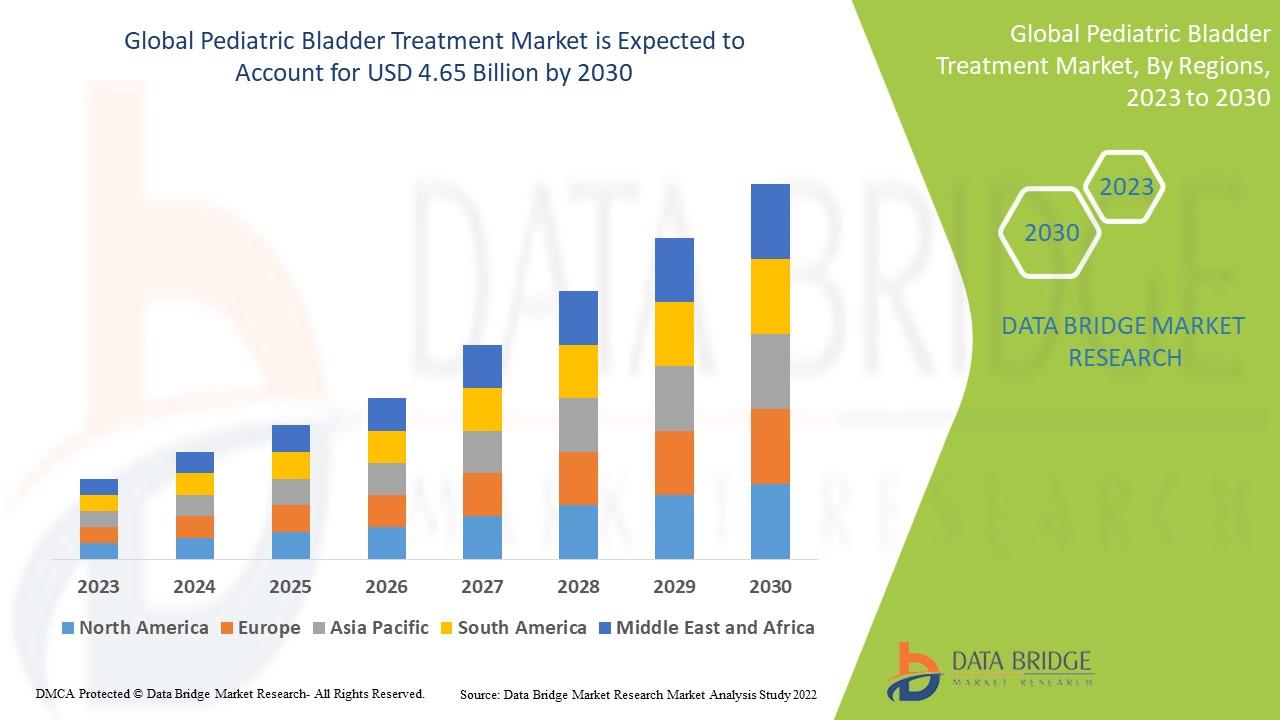Rising Focus on Early Diagnosis Accelerating the Pediatric Bladder Treatment Market

Pediatric Bladder Treatment Market Overview
The Pediatric Bladder Treatment Market Size is witnessing steady growth worldwide, driven by rising awareness of pediatric urinary disorders, advancements in urological diagnostics, and increasing demand for minimally invasive treatment options. In 2022, the market was valued at approximately USD 3.4 billion and is projected to reach USD 4.65 billion by 2032, expanding at a CAGR of 4.00% during the forecast period.
Pediatric bladder disorders—such as urinary incontinence, overactive bladder, vesicoureteral reflux (VUR), and neurogenic bladder—are becoming increasingly recognized, particularly due to improved screening and early diagnosis. The growing incidence of congenital urinary tract abnormalities, coupled with lifestyle factors and neurological conditions, has heightened the need for advanced treatment solutions.
Competitive Landscape for Pediatric Bladder Treatment Market
The Pediatric Bladder Treatment Market is moderately consolidated, with key players focusing on drug innovation, technology integration, and strategic collaborations. Companies are investing in research for targeted therapies and minimally invasive devices to improve treatment precision and reduce recovery times.
Key Market Drivers
- Rising Prevalence of Pediatric Urological Disorders
The increasing occurrence of bladder dysfunctions and congenital urinary anomalies in children has led to greater demand for effective therapeutic interventions. Conditions such as VUR and urinary tract infections (UTIs) are among the most common causes prompting pediatric urology consultations. - Technological Advancements in Pediatric Urology
Innovations in medical devices and surgical techniques—such as robot-assisted surgeries, biofeedback therapy, and catheter-based interventions—are improving outcomes and minimizing patient discomfort. - Growing Awareness and Early Diagnosis
Parents and healthcare providers are increasingly recognizing the importance of early diagnosis and management of pediatric bladder conditions. School health programs and pediatric screening initiatives are also contributing to higher treatment rates. - Expansion of Pediatric Healthcare Infrastructure
The development of specialized pediatric urology centers and children’s hospitals is enhancing access to advanced treatment options. Moreover, improved reimbursement policies in developed regions support market growth. - Increasing Adoption of Non-Invasive Therapies
The shift toward behavioral therapies, pharmacological interventions, and bladder training techniques is gaining popularity due to their safety and effectiveness in children.
Pediatric Bladder Treatment Market Segmentation
By Disorder Type:
- Overactive Bladder (OAB)
- Urinary Incontinence
- Vesicoureteral Reflux (VUR)
- Neurogenic Bladder
- Urinary Tract Infection (UTI)
- Others
By Treatment Type:
- Pharmacological Treatment (Antimuscarinics, Beta-3 Agonists, Antibiotics)
- Surgical Intervention (Endoscopic, Robotic-Assisted, Catheter-Based)
- Behavioral Therapy (Bladder Training, Biofeedback)
- Supportive Care and Monitoring Devices
By End User:
- Hospitals
- Pediatric Specialty Clinics
- Ambulatory Surgical Centers (ASCs)
- Homecare Settings
Regional Insights
North America dominates the global bladder dysfunction therapy market, supported by strong healthcare infrastructure, advanced urology research, and availability of cutting-edge treatment devices. The U.S. leads the region due to increased awareness, insurance coverage, and high adoption of robotic-assisted surgeries.
Europe maintains a significant market share, driven by government healthcare initiatives, clinical research advancements, and access to pediatric specialists. The growing prevalence of congenital urinary tract disorders further supports regional demand.
Asia-Pacific is expected to register the fastest CAGR during the forecast period, fueled by rising pediatric population, improved healthcare access, and government focus on child health programs. Countries like China, India, and Japan are investing heavily in pediatric care infrastructure.
The Latin America shows moderate growth due to increasing awareness of pediatric urinary conditions and gradual adoption of modern diagnostic tools and pharmacological treatments, particularly in Brazil and Mexico.
The market is gradually expanding in Middle East & Africa due to investments in children’s hospitals, improved healthcare funding, and collaborations with global pediatric care organizations.
Emerging Opportunities in Pediatric Bladder Treatment Market
- Development of Pediatric-Specific Drug Formulations: Focus on safe, age-appropriate, and palatable medications.
- Adoption of AI in Diagnosis: Use of artificial intelligence and predictive analytics for early identification of bladder dysfunctions.
- Expansion in Telehealth Services: Remote consultations and monitoring are improving accessibility to specialized pediatric urologists.
- Focus on Regenerative Medicine: Research into stem cell-based therapies for bladder reconstruction and tissue repair.
- Public Health Initiatives: Awareness campaigns to promote timely treatment of urinary disorders in children.
Challenges and Future Outlook
The market faces challenges such as limited pediatric-specific formulations, high treatment costs, and ethical concerns in pediatric clinical trials. Additionally, lack of awareness and diagnosis in low-income regions may restrain market penetration.
However, with the continuous evolution of pediatric urology research, government healthcare initiatives, and technological advancements in treatment methods, the Pediatric Bladder Treatment Market is poised for sustained growth. The future will likely emphasize precision medicine, non-invasive therapies, and digital monitoring solutions, ensuring better quality of life for children affected by bladder disorders.
For More Reports
Histoplasmosis Treatment Market
Liver Fibrosis Treatment Market
About Us:
Data Bridge is one of the leading market research and consulting agencies that dominates the market research industry globally. Our company’s aim is to give clients the knowledge they require in order to function in changing circumstances. In order to give you current, accurate market data, consumer insights, and opinions so that you can make decisions with confidence, we employ a variety of techniques, including surveys, video talks, and focus groups around the world.
Contact :
Data Bridge Market Research Private Ltd .
3665 Kingsway — Suite 300 Vancouver BC V5R 5W2 Canada
+1 614 591 3140 (US)
+44 845 154 9652 (UK)
- Art
- Causes
- Crafts
- Dance
- Drinks
- Film
- Fitness
- Food
- Giochi
- Gardening
- Health
- Home
- Literature
- Music
- Networking
- Altre informazioni
- Party
- Religion
- Shopping
- Sports
- Theater
- Wellness


